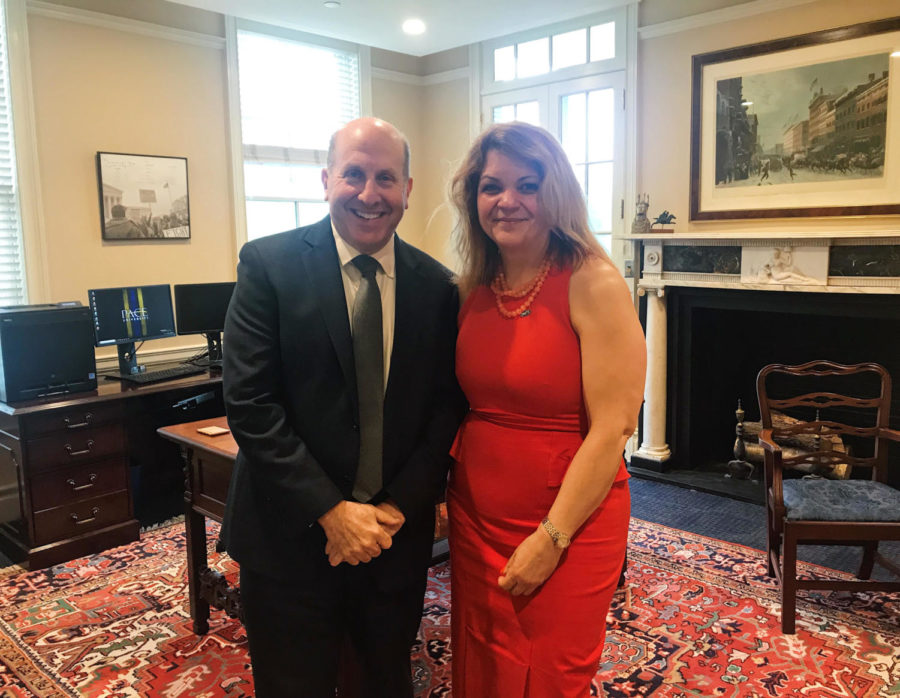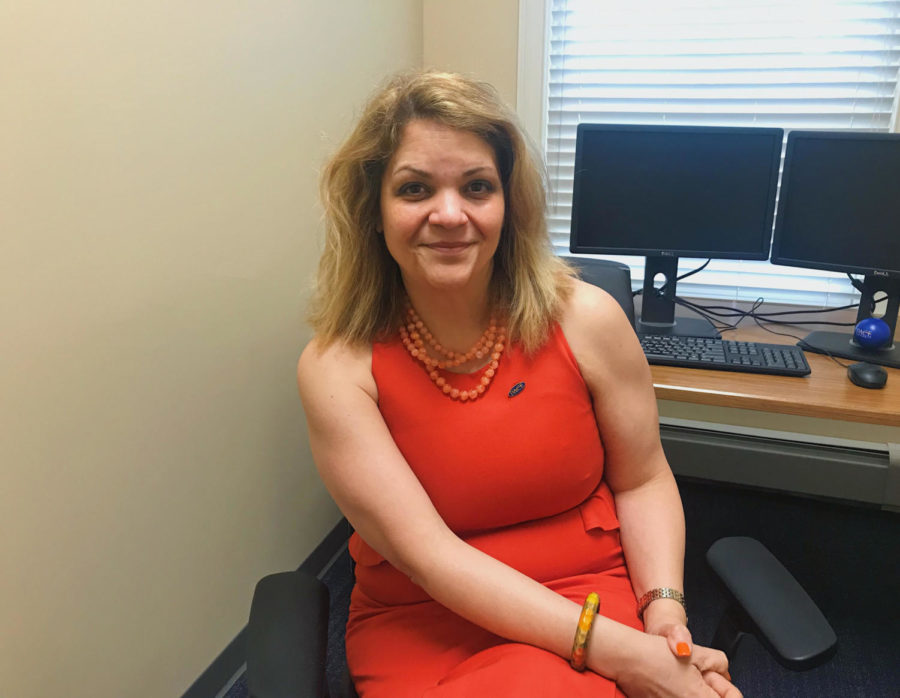The Provost’s Plan for Pleasantville
After one year at Pace, Provost Vanya Quiñones presented the Pleasantville Plan at the Faculty Council meeting on Friday, May 10.
A first-year leader at Pace is looking to shake up Pleasantville to capitalize on its strengths and market opportunities. Provost Vanya Quiñones is heading into into her second year with a Pleasantville Plan that she proposed at a Faculty Council meeting this past Friday.
Provost Quiñones came to Pace in July 2018, ready to improve on target areas that people believed needed help. Since she was new to the campus, she found out about these areas for improvement through asking those in the community about what they saw as Pace’s strengths and weaknesses.
“I want people to know how great Pace is,” said Provost Quiñones. “It’s a hidden gem. Outside people don’t know how great Pace is.”
One area that Provost Quiñones believes Pace does well is following through on its mission of Opportunitas. She says that Pace does a good job of making opportunities for learning, professional experience, and growth available to all of its students in order to ensure that upon graduation, students are ready for their futures.
“That’s really special at Pace,” Provost Quiñones explained. “Most institutions have a mission and they don’t do it or they only partially do it. But I think that anyone you talk to, administrators, faculty, or staff, they want to provide opportunities to our students, and I think that’s what we do and will continue to do and improve.”
Looking to the future, Provost Quiñones wants to make sure that Pace offers all of the support mechanisms necessary for student success. One aspect of this is revitalizing the Learning Center through adding more tutors, especially in courses that students tend to struggle with. Also, she plans to revamp advising so that it is “360° advising,” meaning that students will get advising for other aspects of student life besides just academic.
Provost Quiñones recognizes the strength of Pace’s biology, chemistry, and health programs, so she wishes to implement new programs and initiatives to draw more students and hopefully increase revenue for the university. For example, in the Pleasantville Plan she presented at the Faculty Council meeting, she specifically noted that master’s programs in applied psychology and applied science are in development while a bachelor’s and master’s degree program in pharmaceutical science is a future goal.
“The idea is to have things that are on the front of the market so that students want to come here,” Provost Quiñones said in the Pleasantville Plan presentation.
Adding graduate programs that are in high demand by both employers and students makes financial sense. Graduate students will be increasing Pace’s revenue from tuition and are unlikely to live on campus and add to the housing shortage. However, some faculty expressed reservations about adding more programs because it could have a negative impact on faculty workload. Also, to make faculty available to teach graduate courses, enrollment caps for undergraduate courses could be raised in order to offer fewer sections of a course.
Overall, Provost Quiñones’s presentation on the administrators’ Pleasantville Plan involves making Pleasantville financially sustainable. There have been rumors about closing this campus because of how expensive it is. There have also been rumors about getting rid of athletics. However, Provost Quiñones emphasized that neither of these things are true.

President Marvin Krislov and Provost Vanya Quiñones worked on the Pleasantville Plan with other administrators and will continue to develop it with faculty input.
Pace depends on tuition for a majority of its funding. When Elm Hall and Alumni Hall were being built, people did not want to attend the school because of the construction. As an incentive, Pace offered increased scholarships, formally known as tuition discount rates. Once Pace lowered its price, so did surrounding colleges in order to compete. Then once the new dorms were built, Pace could not raise its price back to where it was before because now all of the colleges in this area were offering lower prices. The Pleasantville Plans seeks to address this issue, in part, through focusing on net tuition revenue, which is the total amount of revenue the university gains from students’ tuition excluding any grants or aid provided to the students.
Dr. David Rahni of the chemistry department is the chair of Faculty Council. He explained that Pace is doing selective discount rates, which means that some programs are discounted more than others. Programs that are in high demand that have reached capacity are discounted less because there is almost a guarantee that the spots in the program will still fill even if the price tag is a little higher. On the other side, programs that have less demand are discounted more in order to attract students to fill spots.
“In doing this, we hope to move in a direction to make the university more solvent because we are tuition-driven,” explained Dr. Rahni.
Provost Quiñones said that even though changing the discount rate could decrease overall enrollment because a Pace education would be more expensive, the net tuition revenue would end up increasing because the students that do enroll will be paying more.
Another point of the Pleasantville Plan is that the cost per credit hour is higher in Pleasantville than in New York City. Provost Quiñones portrayed this difference as the city campus subsidizing costs on the Pleasantville campus. One proposed response is moving some full-time professors from the Pleasantville campus to the city campus. This response would decrease the amount of adjunct professors needed at the city campus, which would reduce some costs.
There is concern among some faculty that this move would threaten Pleasantville’s small classroom sizes. On the campus, it is more likely that classroom size is a determining factor for a student to commit here than at the city campus. So increasing the average classroom size could decrease enrollment and decrease revenue.
“The faculty want to assert that we are a very different model of college campus than the New York model,” explained Psychology professor and Chair of Faculty Affairs Dr. Ross Robak. “The New York model is a city model. Here, we are a more upstate New York college model that certain students are attracted to, and because of that, we have certain strengths that need to be recognized and acknowledged by the administration, by faculty, by students, by everybody.”
The Pleasantville Plan is part of an ongoing discussion to better the financial reality of Pace. There are not easy answers, as even seemingly simple solutions have a mixture of positives and negatives. Overall, Provost Quiñones and the faculty appear to want to make sure that they continue to provide for student success while making financially responsible improvements. Going into summer and fall, the faculty hope to hear more specific information on the Pleasantville Plan from the Provost and other administrators.
Your donation supports independent, student-run journalism at Pace University. Support the Pace Chronicle to help cover publishing costs.

